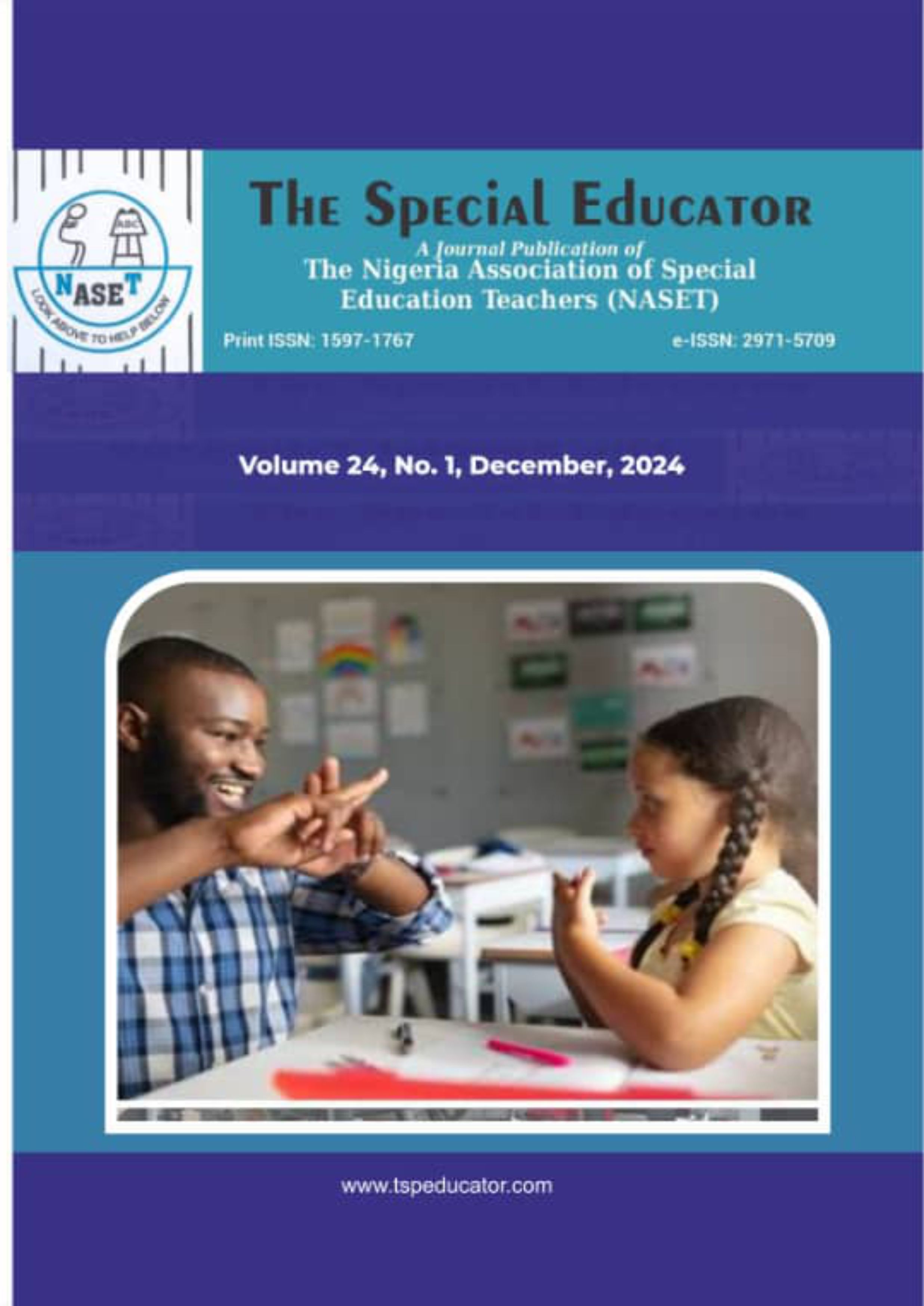Professionalising Skills in Teaching and Learning Adaptive Technology for Learners with Hearing Impairment
Keywords:
Adaptive technology, Hearing impairment, Professional development, Inclusive education, Specialized trainingAbstract
In teaching and learning adaptive technology for kids with special needs, this paper highlights how vital it is to professionalize one's skills. The varied demands of students, scarce resources, and poor training present instructors with considerable obstacles when implementing adaptive technology. Effective integration requires specialized training curricula that are adapted to educators' needs. Among the most important tactics for empowering educators are cooperative relationships, continual professional development, and availability of extensive materials. A transformational impact on student learning outcomes is highlighted by case studies and best practices, which showcase effective approaches to teaching adaptive technology. Teachers can become more adept at using adaptive technology to provide inclusive and equitable education for students with hearing impairment by addressing these issues and advocating for specialized training.
References
American Academy of Pediatrics. (2020). Caring for children with special health care needs and disabilities: A resource guide for physicians. Retrieved from https://www.aap.org/en-us/Documents/medical_home/Caring_for_Children_With_Special_Health_Care_Needs_and_Disabilities_A_Resource_Guide_for_Physicians.pdf
American Speech-Language-Hearing Association. (n.d.). Augmentative and Alternative Communication (AAC). Retrieved from https://www.asha.org/public/speech/disorders/aac/
Bouck, E. C., Flanagan, S., Bouck, M., Joshi, G., & Maeda, Y. (2017). Preservice and in service professionals self-efficacy for providing transition services to students with disabilities: A synthesis of the literature. Teacher Education and Special Education, 40(2), 89101.
Brooks, R. (2010). Evaluating assistive technology in educational settings. Journal of Special Education Technology, 25(1), 29-32.
Center for Parent Information and Resources. (n.d.). Adaptive Equipment and Assistive Devices. https://www.parentcenterhub.org/adaptivedevices/
Centers for Disease Control and Prevention. (n.d.). Developmental disabilities. Retrieved from https://www.cdc.gov/ncbddd/developmentaldisabilities/index.html
Erturk, S. A. (2018). Integrating technology into educational settings: A synthesis of professional development research. Computers and Education, 125, 180193.
Grandin, T. (2013). Teaching Tips for Children and Adults with Autism. Retrieved from https://www.autism.org/temple-grandin-teaching-tips/
Hetzroni, O. E., & Shalem, U. (2016). Effect of computer-assisted intervention on increasing communication functions of children with autism. Journal of Autism and Developmental Disorders, 46(5), 1690-1702.
Heward, W. L. (2019). Exceptional children: An introduction to special education. Pearson.
Johnson, D., & Brown, E. (2020). Communication and teamwork skills in project management: A review of the literature. Project Management Journal, 40(2), 56-72.
Jones, R., & Smith, L. (2018). Lifelong learning and professional development in the 21st century workplace. Journal of Lifelong Education, 30(4), 198-215.
Kiger, D., & Herro, D. (2016). Examining teachers professional learning opportunities for integrating technology. Computers and Education, 98, 7991.
Kurt, Ö. (2020). Attitudes of preservice teachers towards students with disabilities: The effect of self-efficacy, social support and experience. Educational Sciences: Theory and Practice, 20(3), 1617.
Lindsay, S., & Woods, J. (2018). Conceptualising the efficacy of technology for special education. Journal of Special Education Technology, 33(4), 175-189.
Mackelprang, R. W., & Salsgiver, R. O. (2016). Disability: A diversity model approach in human service practice. Cengage Learning.
National Center on Accessible Educational Materials. (n.d.). Accessible Educational Materials (AEM). https://aem.cast.org/
Rehabilitation Engineering and Assistive Technology Society of North America. (n.d.). AT and IT: Ensuring Compatibility. https://www.resna.org/at-and-it-ensuring-compatibility
Rehabilitation Engineering and Assistive Technology Society of North America. (n.d.). What is assistive technology? Retrieved from https://www.resna.org/what-is-at
Rose, D. H., & Meyer, A. (2002). Teaching every student in the digital age: Universal design for learning. ASCD.
Schwartz, J., Behrmann, M., & Collet-Klingenberg, L. (2017). Assistive technology in the classroom. Journal of Learning Disabilities, 50(6), 682-691.
Smith, A., Johnson, B., & Williams, C. (2019). The role of technical and interpersonal skills in information technology careers. Journal of Information Technology, 25(3), 123-140.
Smith, S. J. (2014). Developing independent learning skills using assistive technology with deaf students. American Annals of the Deaf, 158(3), 298-307.
Special Education Technology Center. (2018). Assistive technology: Equipment and services that help students with disabilities. Retrieved from https://www.washington.edu/doit/assistive-technology-equipment-and-services-help-students-disabilities
U.S. Department of Education. (n.d.). Individuals with Disabilities Education Act. Retrieved from https://sites.ed.gov/idea/
World Health Organization. (2019). Assistive technology. https://www.who.int/news-room/fact-sheets/detail/assistive-technology


